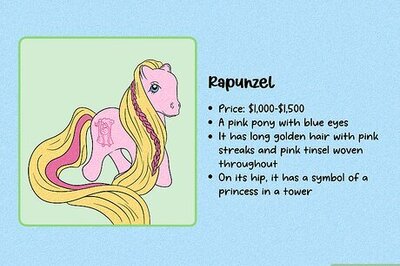
views
New Delhi: More than four lakh additional berths will be available to passengers every day from October when the railways will move to a technology which will help it generate power from engines, rather than power cars, for lighting and air-conditioning, senior officials said Wednesday.
Currently, there are one or two power cars at the end of every train in every LHB rake where the electricity to be supplied to coaches is produced in a diesel generator, known as End on Generation (EOG), officials say.
The new technology, "Head on Generation" (HOG), is used worldwide, by which power supply is tapped from overhead power lines and distributed to train coaches.
Officials say by October 2019, over 5,000 coaches of the Indian Railways will operate on the new technology. It will not only enable trains to shed their power cars and make way for more coaches but also save the national transporter more Rs 6,000 crore in fuel bills annually, they say.
A power car needs 40 litres of diesel per hour per non-AC coach while an AC coach needs 65-70 litres of diesel per hour. Around three units of electricity is provided by one litre of diesel, so a non-AC coach uses around 120 units of electricity per hour.
The new system, which is eco-friendly, with no air or noise pollution will reduce carbon emissions by 700 MT per year per train, officials said.
"In regular practice, two power cars equipped with Diesel Alternator sets are placed at either ends of the rake run in for example every Shatabdi Express. After we move to the HOG system, there is need of only one power car for standby purpose only.
"Another power car can be removed and replaced with an extra passenger coach without increasing the train length. Once all LHB coaches are on this system, we have calculated an increase of more than four lakh berths everyday through this and thus additional revenue as well," said an official.
















Comments
0 comment